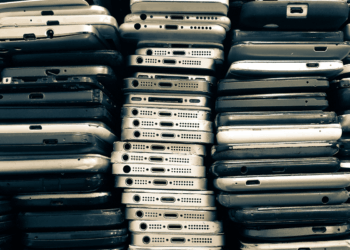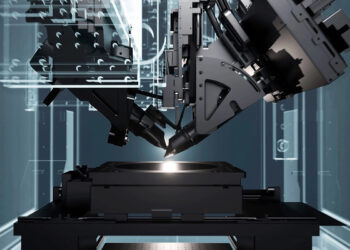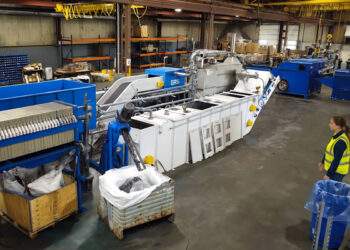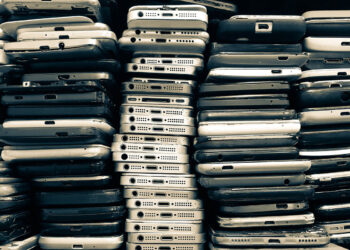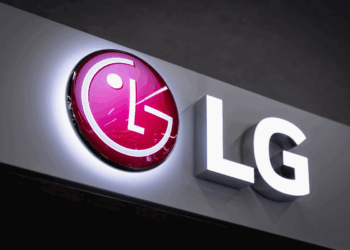As more companies look to address e-scrap recovery, some are moving away from gentle dismantling and instead aiming for speed – and Apple is now one of them.
Apple’s experiments into iPhone-dismantling technology started in 2013, according to an article by TechCrunch. The first two robots – dubbed Liam 1.0 and Liam 2.0 – were designed specifically to handle iPhone 5s and iPhone 6s, respectively. The first iteration took 12 minutes per device; the second cut that time down to 11 seconds.
The next generation – named Daisy – takes 18 seconds but is smaller and can handle far more device types, the article noted. In the nearly eight years it has been Apple’s working robot, it has been upgraded to process 29 different iPhone models. Even just a year and a half ago, it was only processing 18 different models.
“Daisy significantly reduces Liam’s overall footprint from 29 robots across 100 feet to four primary modules, while increasing the number of material output streams from 8 to 15,” the article stated. The new robot measures 33 feet and requires three or four humans to manage each module.
Instead of unscrewing each screw, Daisy instead “punches out” the components, TechCrunch reported. First, a worker feeds a bin of iPhones into Daisy’s chute, and the robot places them on the conveyor belt to be scanned and identified. Robotic arms place each phone into a metal bracket, remove the display, then send the device into a cooling chamber to freeze it. That causes the battery adhesive to fail, the article noted, and the battery can then be punched out, followed by other components.
After the parts are punched out, a worker sorts the components out to be sent downstream. Daisy can process up to 1.2 million iPhones per year, which TechCrunch noted is “ultimately a drop in the bucket, compared to the 150 million smartphones that were discarded in 2023.”
Apple intends Daisy to act more as a recycling ambassador than a full solution, but the company does allow other companies to license the Daisy IP patents for free.
“The U.S. Patent and Trademark Office issued Apple five patents related to Daisy, and we’re willing to license these to researchers and other electronics manufacturers who are developing their own disassembly processes in hopes that they will follow suit and work to increase the share of recycled materials in the supply chain,” Apple stated in its 2024 Environmental Progress report.
There are Daisy robots operating in Apple facilities in several countries, the progress report noted, along with other robots Taz and Dave, which focus on rare earth magnets.
In a similar bid for speed rather than precision disassembly or shredding, Garner Products recently released the DiskMantler, which dismantles hard drives in roughly one minute using strong vibration.






